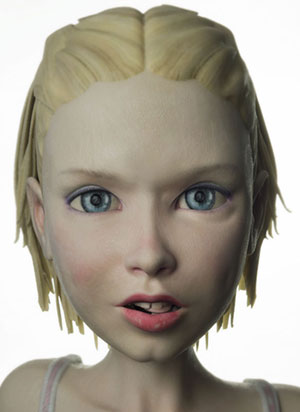Maybe he was inspired by my lack of 3D model repair skills, as detailed in my quest to 3D print a drag queen. Or, more likely, artist Eric van Straaten simply realized that, after six years of preparing his own artwork for 3D printing, he’d be able to offer his own repair services in this growing field. Either way, if you need help prepping a digital model for 3D printing, particularly a full colour object, van Straaten might just be your man.
The artist is best known for his artistic 3D prints that have raised some questions of taste featuring, as they do, young girls and, whether or not you like his disturbing imagery, it’s clear that van Straaten has skill when it comes to colour and detail. Furthermore, to utilize this skill, he is now offering his basic 3D model fixing service starting at $75 for relatively simple objects. van Straaten believes that most items printed by consumers won’t be of their own design, but through 3D scanning or online printable sites, like Turbosquid and Google Sketchup. He points out, though, that not every scan or downloaded file is perfect for printing:

These software packages don’t however fix the parts of the model that are built up by ‘planes’. If you want to let these be recognized by the printer as ‘volumes’, you have to ‘thicken’ them. The thickening itself is problematic because it produces errors in the mesh and with complex shapes, it places heavy resources on your computer. The biggest problem however, is that it is very difficult to retain color information during the fixing process.
I can attest to the problems outlined above. In printing the Manila Luzon model in the aforementioned drag queen story, I struggled to find a simple-to-use repair software that would fix my model, without destroying the overall aesthetic appeal of the piece. Repairing the model in Photoshop CC left Manila swollen in all the wrong places and MeshLab wiped out the colour information. And, needless to say, Shapeways and Sculpteo’s automatic repairing was of no use. In the end, the 3D colour printing service I used, 3D Rapid Prototyping, Inc., offered to repair the mesh for me.
Not every printing bureau will be so kind. So van Straaten pitches, “If you want to get your model 3D printed and don’t know how to do that, or you know how to do that, but still can’t get it to work, mail me at [email protected] and I’ll see what I can do for you.” Act now, in case he finds himself in trouble for the work in his portfolio!


